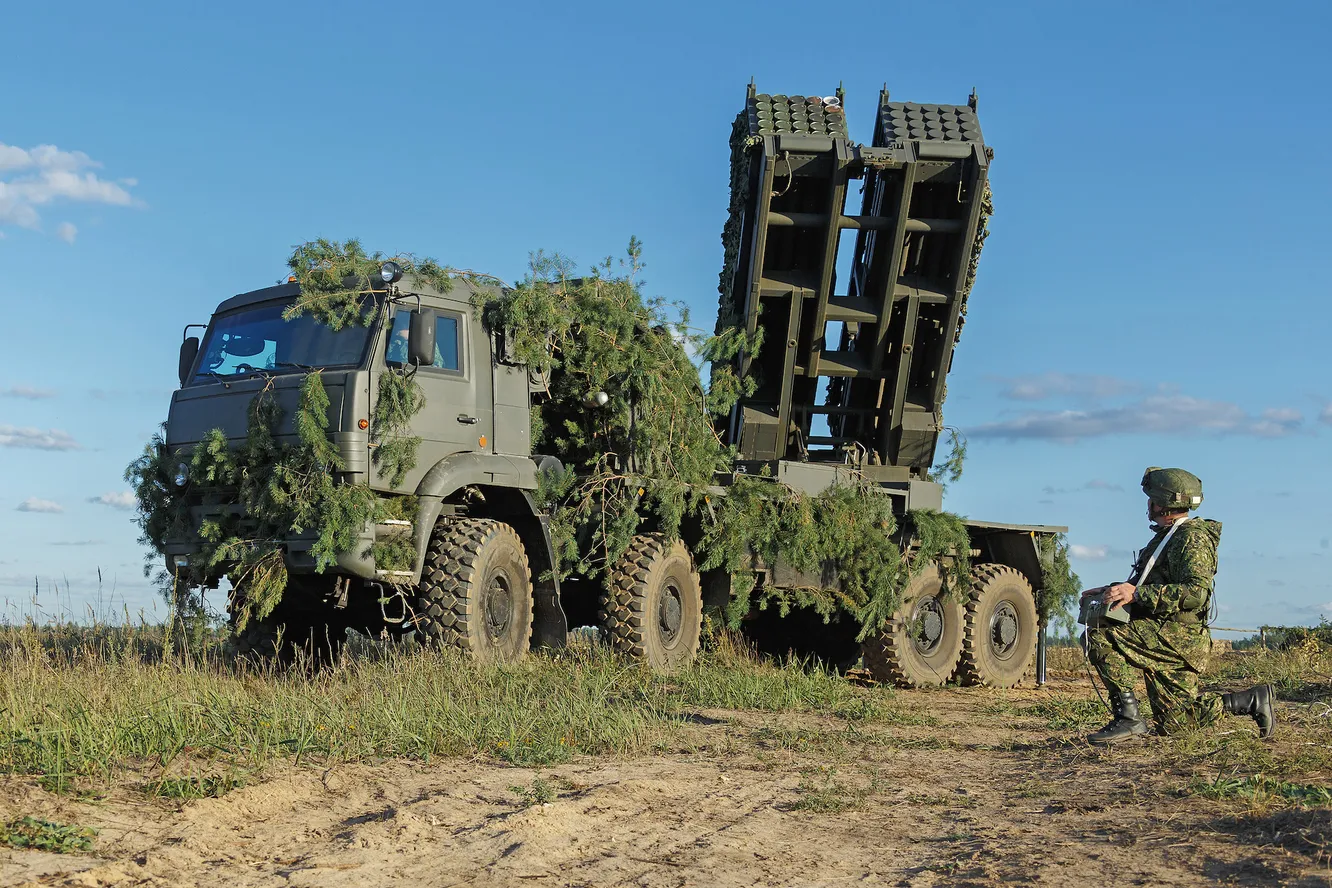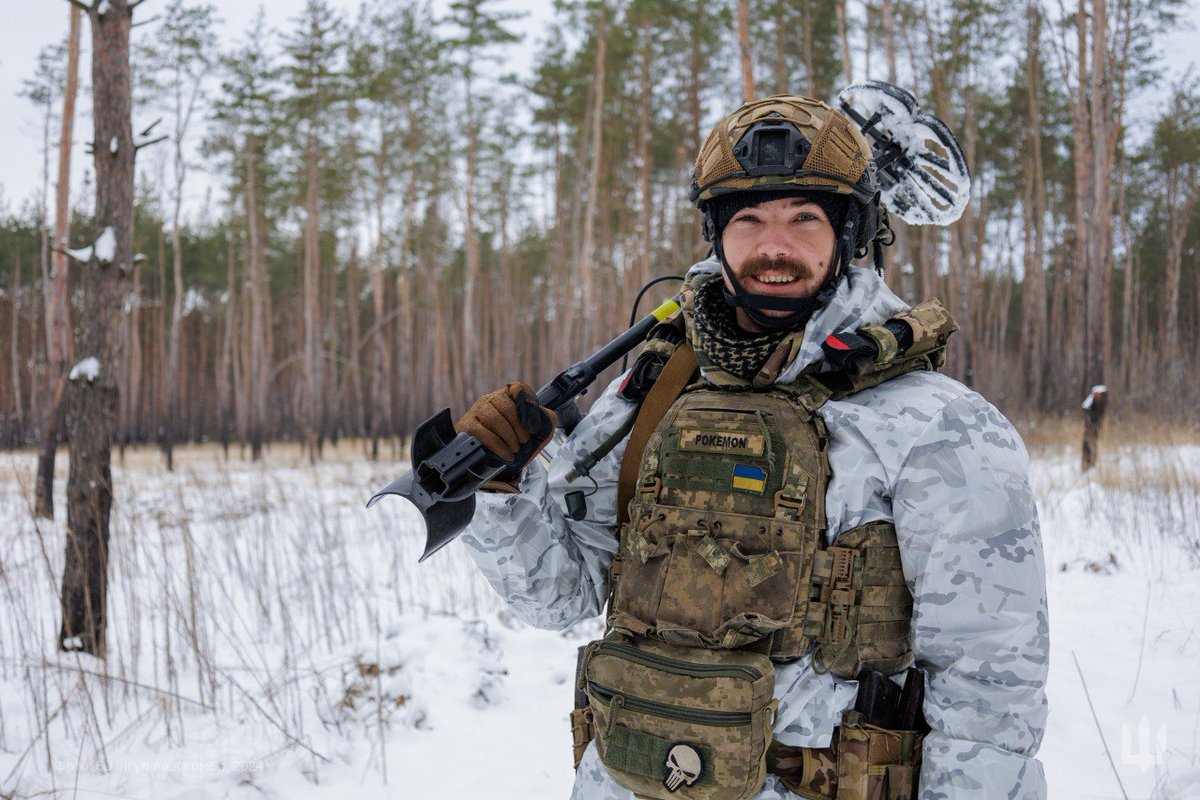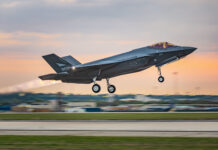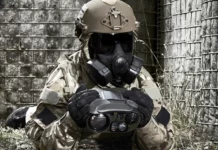The task of building and breaching battlefield obstacles has come sharply back into the spotlight following Ukraine’s difficulties breaking through Russian lines during their summer 2023 counter-offensive. It therefore bears examining Russia’s approach to defensive fighting, as well as the particular difficulties faced by Ukraine in overcoming the many obstacles in their path.
Russia’s defences in Ukraine have caused, and will continue to cause, considerable casualties to Ukrainian forces. Now, there are emerging reports indicating that Western instructors did not properly understand the requirements of fighting in Ukraine and failed to appreciate how Russians would defend.[1] One could argue that this reflects in part a loss of expertise within the Western community. Analysts in the 1980s took a great deal of time to understand Soviet defensive doctrine and how it would be employed. One example is FM 100-2-1 titled, ‘The Soviet Army: Operations and Tactics’ which was published by the US Army in 1984.[2] The document provides a useful insight into how Soviet forces envisioned a defensive operation, and contains many parallels to current Russian operations in Ukraine.
Notably, the Soviets defined defensive operations as combat operations designed specifically to repulse attacks by superior forces, inflict heavy casualties and create favourable conditions for a decisive offensive. They are also used to consolidate taken ground and provide breathing room for an offensive that has failed. This is of course a fairly obvious assumption – but it provides context to wider commentaries focused on the progress of the Ukrainian offensive. ‘The Russian Way of War’, published by Lester Grau and Charles Bartles in 2017, is more current than FM-100-2-1, and is also used to inform the following analysis.[3]

Credit: Ukrainian MoD
At the tactical level, FM 100-2-1 is insightful. It states that Soviet defensive operations conceptually consisted of a security zone forward of the main defensive area. The defensive area did not consist of continuous belts of fortified positions, but rather clusters of strongpoints defended by motorised rifle infantry with mobile reserves consisting of tank heavy formations. Grau and Bartles add that the defence should be stable, in the context of Ukraine this meant dispersed and concealed formations to minimise the damage caused by precision munitions.[4] The defence should also be active, which encompasses several types of action in the context of a war with NATO, but most relevant for Ukraine is the requirement to “place the enemy under constant fire.”[5]
There are several aspects to a defensive operation identified in FM 100-2-1 (referenced on page 93 of the document), each of which is worth examining with respect to the War in Ukraine.
1) The Security Echelon
The Security Echelon is deployed ahead of the main defensive area with the main role of engaging enemy forces, in an attempt to make them deploy prematurely and outside of direct fire range of their main defence. The security echelon uses obstacles such as mines and is expected to resist the enemy’s advance stubbornly. Compare this with reports from Ukraine, which indicated that despite weeks of offensive operations, the Ukrainians only reached the first ‘main line’ of the Russian defences in August 2023.[6] It is therefore possible that the first elements of the offensive were resisted by a Russian security echelon that likely decided to defend its positions forward, rather than concentrate most of its combat power in the first and second lines of defences.
2) The Main Defensive Area
The main defensive area sits behind the security echelon and consists of platoon or company level strong points. The Soviets were planning around nuclear weapons, so dispersion was key for survival, but not at the expense of overlapping fields of fire and the creation of Fire Sacks (see no. 3 below). Anything that could be dug in would be, and provided with protective overhead cover, communication trenches were dug to link positions and wired communications established. The defence would appear as bands or belts, as opposed to a continuous line, and represents a defence in depth.
The various open source attempts to monitor and observe Russia’s defensives indicate that they have not strayed far from this principle.[7] As with Soviet concepts, the defence was intended to funnel and channel Ukrainian forces into Fire Sacks where indirect fires could be massed and applied along with combined arms assaults to counter efforts to advance, and to inflict losses.
3) The Fire Sack
The fire sack is basically the same as the US concept of a kill zone. It is a pre-registered area where an enemy force would be expected to bunch up and present a suitable target for massed indirect fires. Mines and obstacles were to be used to prevent an enemy force exiting the sack and tank heavy reserve forces prepared to attack into the sack and engage anything left after the artillery lifted.
Evidence suggests that this has occurred time and again in Ukraine. Ukrainian troops manoeuvring in their vehicles would encounter minefields much deeper than expected and the offensive would grind to a halt. A combination of artillery, rotary wing aviation, loitering munitions, and the occasional tank-led counter-attack, would proceed to inflict losses on the immobilised formation. Another application was in the use of massed fires on positions captured by the Ukrainians, which allowed Russian forces to regroup and then retake lost territory.
Grau and Bartles state that a motorised rifle battalion (MRB) would be expected to defend a frontage of 3-5 km with a depth of 2-2.5 km. The order of battle for a typical MRB is three companies mounted on BTRs, BMPs, or MTLBs, a mortar battery, anti-tank unit and other supporting functions for an approximate strength of 500 personnel.[8] Each company commands two to four platoons, and each platoon consists of two to four squads. It is likely that the actual strength was slightly lower than this, and that a battalion was defending the upper limits of the area mentioned. An MRB platoon would typically consist of 32 personnel, three BMPs and a command section. It would be expected to defend a strong point with a 400 m frontage using positions for squad weapons, and firing positions for its BTRs or BMPs. The armoured vehicles would move between positions providing fire support for the dismounted infantry. The available evidence, such as videos and first-hand accounts, indicates that this force employment was observed and followed by Russian forces in some places.
FM 100-2-1 describes three additional elements in connection with prepared defence, but are not considered to be primary components mostly because they contribute to the overall success of the three above. These are: obstacles, anti-tank teams, and counter-attacks. The primary means of creating an obstacle for the Soviet forces was the landmine.
Sowing chaos
Each Soviet division included a mine-laying capability formed of tracked mine-laying vehicles with supporting engineers. If required, they could lay a three-row anti-tank minefield, 1,000 m long, in under 30 minutes. This would consist of mines positioned on the surface at a spacing of 4 – 5.5 m, providing a total minefield density of 750 – 1,000 mines per kilometre.

Credit: Russian MoD
The modern Russian forces are able to call on vehicles such as ISDM ‘Zemledeliye’, the remote mine laying system that entered service in 2020 and uses a rocket-based mine dispersal system to sow 50 mines per vehicle, out to ranges of 15 km.[9] An older system is known as the UMZ, or Universal Mine Layer. The original version developed by the Soviets was based on a truck and carried six launchers with 30 tubes each.[10] It could be fitted with anti-tank or anti-personnel mines, and could lay between 180 and 11,520 mines without reloading, based on the desired nature of mine. For some time, Russian forces have also been able to deploy anti-tank and anti-personnel mines using the BM-27 Uragan 220 mm multiple rocket launching system. It carries 16 rockets, each of which is capable of carrying 312 PFM-1 anti-personnel mines, or 9 of the PTM-3 anti-tank mines. As such, a single Uragan could lay a minefield covering 0.24 to 0.81 km2. This minefield would have a low density, so it would be created by at least a battery of BM-27s. This system in particular was used to trap Mujahideen fighters in Afghanistan into valleys during assaults. Similar tactics were employed in Chechnya, and Soviet doctrine also envisaged launching the mines onto enemy formations.
An article deriving lessons from the War in Ukraine notes that the cost-efficiency of minefields increases with a greater density of mines.[11] An axiomatic conclusion perhaps, but nonetheless interesting to observe the importance placed on this topic by Russian military thinkers. Using mathematical formulas, the author states that 300 mines deployed over an 800 m wide minefield would have a 66.3% cost efficiency against a BMP-2 sized target. This reflects the efficiency of a standard minefield against a common armoured vehicle. Now, consider the reality on the ground in Ukraine where it is rare for Russian units to lay minefields according to doctrine. They are, according to Nick Reynolds and Jack Watling from RUSI, frequently double or quadruple the depth of what was expected, and include multiple techniques such as double-stacked TM-62 anti-tank mines, and the use of improvised explosive devices.[12]

Credit: Ukrainian MoD
The challenge of mines in Ukraine was further increased by the nature of the terrain and Russia’s defences. The extensive trenches made obvious in satellite imagery were coupled with concealed positions in treelines and the use of terrain features to impact the available approaches. The Russian forces mixed mine types to complicate demining; one source indicates that OZM-72 bounding fragmentation and MON-50 anti-personnel mines would be used to defend approaches and paths to Russian positions, and other areas would be covered by a mix of PMN anti-personnel and TM-62 anti-tank mines.[13] Drawings recovered from Russian soldiers suggest that OZM-72 and MON-50 mines would be deployed together, with the MON-50 command-initiated. OZM-72s have a lethal radius of 25 m, and the same drawings instruct the soldier to position them 30 m apart to ensure overlap of their lethal radius.[14] Altogether, the depth of Russian minefields was greater than expected, the density of mines was greater than expected, and the nature of the terrain limited flexibility once a minefield had been encountered.
Tactical precision strike vs anti-tank teams
Minefields are not new, and neither is navigating them as part of an offensive operation. British forces fighting at El Alamein in 1942 resorted to manually probing for and lifting mines to create channels through German minefields. The Soviets made extensive use of mines and anti-tank guns at Kursk, with well-known results.[15] However, it was rare for artillery fire to be corrected in real time by aircraft during WW2, and even less common for a single aircraft to achieve a first round hit on a moving tank. This meant that demining operations by hand could be conducted with some expectation of success, assuming that the enemy positions could be suppressed.

Credit: Ukrainian MoD
At the beginning of Ukraine’s counter-offensive, demining was conducted by armoured vehicles such as the Leopard 2R mine breaching vehicle from Finland.[16] It is understood that artillery fire to suppress Russian positions would be maintained for as long as possible, but could not always be sustained throughout an advance and mine-clearing phase. Furthermore, the mine ploughs that enable these vehicles to clear a path are only able to withstand so many mine detonations before they must be replaced. Added to this, the Russian propensity to use double-stacked TM-62s increases the likelihood of immobilising a heavy vehicle. Other systems such as the UR-77 Meteorit mine clearing line charge were also used, but their line charges were designed to defeat mine belts of a certain width, meaning that they needed to be reloaded to clear a path through Russia’s deep mine belts in Ukraine.
Furthermore, all of these vehicles, and the vehicles conducting the offensive, were vulnerable to Russia’s tactical precision strikes assets, which had effectively replaced the Soviet era anti-tank teams. Soviet anti-tank units were equipped with anti-tank guns such as the MT-12 Rapira and some anti-tank guided missiles (ATGMs). The lethality of these systems against heavier targets would not have been guaranteed, and the MT-12 in particular would have prompted counter-fire very quickly. Russian units in Ukraine, however, are armed with a variety of tactical precision strike assets that provide a much higher likelihood of achieving a first round hit. For example, in one defensive area, the Russian forces might have had at their disposal, the Lancet-3M loitering munition, the ground-launched 9M133 Kornet ATGMs, 9M120 Ataka ATGMs launched from Ka-52 helicopters, and drone-delivered munitions. These assets are complemented by the 2K25 152 Krasnopol guided artillery round when available, as well as 250 kg and 500 kg aerial bombs fitted with the UMPK guidance kit.[17] Most of these weapons have a relatively high certainty of a first round hit, and sufficient lethality to immobilise or heavily damage all but the most protected Ukrainian vehicles.
Massed artillery fires with cluster munitions still play an important role for the Russians. However, the low force densities, enormous expanse of the Ukrainian battlefield, and restrictions on the use of artillery munitions mean that inflicting losses with artillery alone would be inefficient. This was especially the case after Ukraine had managed to degrade Russia’s available artillery.

Credit: Ukrainian MoD
The eventual result of Ukraine’s counter-offensive was the abandonment of demining vehicles and efforts to create routes through Russian minefields by hand. Teams of sappers would begin their missions at dawn and use night vision goggles (NVGs) to locate and remove mines. They used drones with thermal imaging to help locate mines warmed by the sun, but during these attempts they were targeted extensively by drones, artillery and snipers.[18] The paths they cleared were used by infantry to conduct limited ‘bite and hold’ assaults against Russian positions, however they were often dislodged by counter-attacks. The combination of extensive and complex mine belts with tactical precision strike assets elevated the cost of breaching Russia’s defences for the Ukrainian forces, and ultimately led to tactics that could not deliver the breakthrough that many were hoping for.
Counter-attacks
Russian forces counter-attacked to regain lost positions, or at times to simply inflict losses. Immobilised formations might be engaged by a pair of tanks, which Russian forces were willing to trade in exchange for causing Ukrainian losses.[19] The counter-offensive did create issues for the Russians, however, and drove commanders to relocate units from other areas of the front to defend against Ukraine’s advances.[20] They would use pre-planned fires on their own previously-abandoned positions, and conduct small unit offensives with varying degrees of success.

Credit: Russian MoD
The Russians also made the most of the opportunity presented by Ukraine concentrating forces and resources in the Donetsk and Zaporizhzhia oblasts, and conducted their own localised attacks.[21] The end result was that Russia captured more territory than Ukraine in 2023.[22]
In sum
Russia’s forces in Ukraine have pursued a defensive doctrine that would have been familiar to Soviet soldiers in Europe circa the 1980s. They have exploited landmines to slow and degrade Ukraine’s offensive power, and they used extensive mass fires to capitalise on the effects of those minefields, and counter any successful breakouts. However, the much greater proliferation of tactical precision strike assets would be alien to soldiers in the 1980s, and it has likely increased Ukraine’s losses in a variety of ways. All in all, if Ukraine is to break through the Russian lines, it will need a lot more in terms of firepower and resources. Attacking prepared defences without an element of surprise and air superiority was always unlikely to yield significant results. Ukraine’s allies must therefore seek new ways to arm its forces and ensure that the next counter-offensive achieves its goals.
Sam Cranny-Evans
[1] https://www.opendemocracy.net/en/odr/ukraine-russia-training-nato-west-military/
[2] https://irp.fas.org/doddir/army/fm100-2-1.pdf
[3] https://www.armyupress.army.mil/portals/7/hot%20spots/documents/russia/2017-07-the-russian-way-of-war-grau-bartles.pdf
[4] https://www.armyupress.army.mil/portals/7/hot%20spots/documents/russia/2017-07-the-russian-way-of-war-grau-bartles.pdf
[5] https://www.armyupress.army.mil/portals/7/hot%20spots/documents/russia/2017-07-the-russian-way-of-war-grau-bartles.pdf
[6] https://www.pravda.com.ua/eng/news/2023/08/8/7414742/
[7] https://www.nytimes.com/interactive/2022/12/14/world/europe/russian-trench-fortifications-in-ukraine.html
[8] https://www.armyupress.army.mil/portals/7/hot%20spots/documents/russia/2017-07-the-russian-way-of-war-grau-bartles.pdf
[9] https://www.techinsider.ru/weapon/1540730-nemirnoe-zemledelie-kak-rabotaet-rossiyskaya-sistema-zalpovogo-minirovaniya/
[10] 1996-01-01 Instant Obstacles- Russian Remotely Delivered Mines (D-Aria and Grau).pdf
[11] https://army.ric.mil.ru/Stati/item/504794
[12] https://ik.imagekit.io/po8th4g4eqj/prod/Stormbreak-Special-Report-web-final_0.pdf
[13] https://twitter.com/Tatarigami_UA/status/1690076623469531136
[14] https://www.linkedin.com/feed/update/urn:li:activity:7005499777253531649/
[15] https://1997-2001.state.gov/global/arms/rpt_9401_demine_ch1.html
[16] https://www.mtvuutiset.fi/artikkeli/tallaisia-ovat-suomen-ukrainalle-luovuttamat-taistelukentan-tyojuhtina-tunnetut-leopard-raivausvaunut/8640070#gs.3r3ufg
[17] https://en.defence-ua.com/weapon_and_tech/the_russians_used_the_umpk_module_to_convert_the_fab_250_into_a_guided_aerial_bomb-8481.html
[19] https://static.rusi.org/Stormbreak-Special-Report-web-final_0.pdf
[20] https://www.bbc.com/russian/articles/cyjxxdl2lp9o
[21] https://www.ft.com/content/4351d5b0-0888-4b47-9368-6bc4dfbccbf5
[22] https://www.nytimes.com/interactive/2023/09/28/world/europe/russia-ukraine-war-map-front-line.html











